Raman handheld technology is now widely used by security personnel, law enforcement and safety for rapid detection of illicit drugs, dangerous chemicals, medication and explosives etc.
As a result of the sturdy design and mobility of handheld Raman devices, law enforcement and public safety workforce can identify suspicious compounds in the field.
Street samples that have been pigmented with bright colors, popular with ecstasy tablets for example, can prove to be considerably difficult to identify as a result of the fluorescence interference typically associated with Raman devices that use a 785 nm laser.
Disruption to measurements is caused by the photoluminescent nature of fluorescence when it absorbs photons from the laser, this floods the Raman signal completely or partially and consequently a clearly defined Raman signature cannot be produced and the compound cannot be correctly identified.
Therefore, the presence of fluorescence is likely to restrict the Raman identification of pigmented compounds, as well as those that also contain plant-plant based drugs or cutting agents, resulting in a deficit in the performance of rapid analysis on site.
TacticID-1064
The wavelength of the laser used to excite the fluorescence determines how it appears, this is in contrast to using an incident laser which can cause Raman scattering at any wavelength. When a visible laser with a wavelength for example of 532 nm and 785 nm is used to identify a highly-pigmented compound, this usually produces a large amount of fluorescence in the Raman spectrometer flooding out the Raman signal.
However, when using a laser wavelength in the infrared region of light, like 1064 nm, the amount of fluorescence produced is decreased from such compounds.
Therefore, the latest development in Raman technology to drastically minimize fluorescence disruption in the identification of highly-pigmented compounds using handheld Raman devices is the use of a 1064 laser, in contrast to a 785 nm laser that was previously used.
The newly available B&W Tek’s TacticID® utilizes this system and is specifically tailored for rapid in-field forensic analysis of highly-pigmented, difficult-to-identify compounds by safety personnel, first responders, and police.
Case Study: Ecstasy
Ecstasy is a popular illicit drug among adolescents and young adults, the tablets that circulate music events and nightlife scenes are frequently pigmented and branded to attract this type of audience. Once consumed, ecstasy alters the mood and perception of the individual, this is caused by the major ingredient 3,4-methylenedioxymethamphetamine (MDMA), which is a synthetic drug, chemically similar to those of stimulants and hallucinogens.
Consumption of this drug can be fatal, as a result of a dangerous rise in body temperature and dehydration. Classed as a Schedule I drug by the DEA (Drug Enforcement Administration) in the US, MDMA is categorized to have a high potential for abuse.
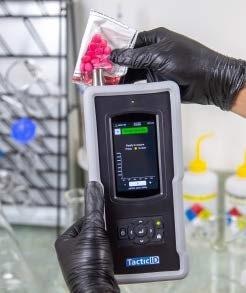
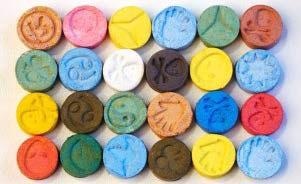
As a result of the pigmented nature and addition of other substances in ecstasy tablets, it is not good enough to use a Raman device with a 785 nm laser for the identification of the substance, due to the disruptive high fluorescence.
See below figure 1, which depicts the stark difference in Raman signature produced by the same pink-pigmented MDMA pill but from using two different wavelength laser Raman devices, 1064 nm (red trace) and 785 nm (blue trace).
As the figure clearly shows, the fluorescence produced from 785 nm laser flood the characteristics of the Raman peaks of the highly-pigmented MDMA sample, in contrast to the 1064 nm laser, which produces clear and identifiable MDMA Raman signature peaks.
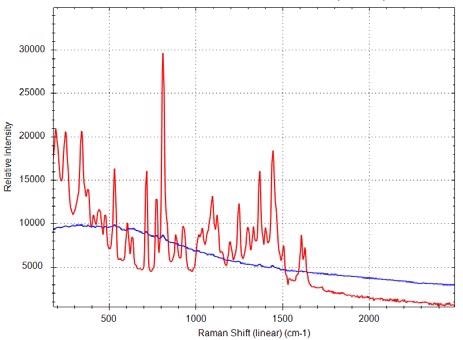
Figure 1. MDMA pink tablet Raman spectra measured by 1064-nm laser (red trace) vs. 785-nm laser (blue trace)
TacticID-1064 Test Results
Ecstasy tablets that contain different pigments were compared using the TacticID-1064 and the result of the pink pigmented drug is shown in Figure 2. It takes only 2 seconds to carry out integration and the scan has identified MDMA HCL in the reference library, with a hit quality index (HQI) as high as 96.
The HQI value corresponds to how closely the sample and reference MDMA signatures match, e.g. a HQI of 100 would mean that the sample and the library MDMA match completely (100%). Typically, it is accepted that a HQI value of greater than 85 is enough similarity to the reference signature to identify the major substance found in street substances.
If a sample has a value of less than 85, mixture analysis mode can be engaged to allow the user to analyze in more detail the components that make up the sample. See Table 1 below, for a summary of different ecstasy tablets with a variety colors and logos that were analyzed with the TacticID-1064.
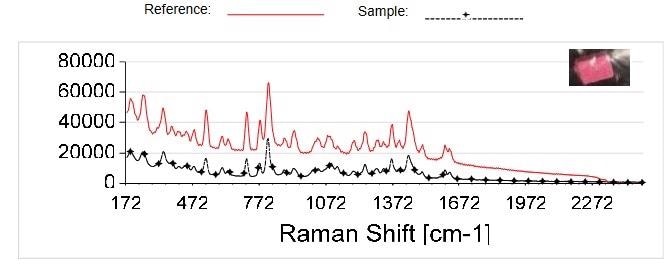
Figure 2. TacticID-1064 test on pink ecstasy pill matching to MDMA HCl with HQI=96
Table 1. TacticID-1064 testing details for different ecstasy pills
| Pill Color |
Markings |
Photo |
Top Match |
HQI |
Mixture Analysis |
| Pink |
Stamped with “Supreme” |
 |
MDMA HCl |
96.1 |
N/A |
| Blue |
Blue Grenade |
N/A |
MDA HCl |
90.5 |
N/A |
| Yellow |
Tiger |
 |
MDMA HCl |
87.2 |
N/A |
| Pink |
Red Bull logo |
 |
MDPV |
86.0 |
N/A |
| Orange |
Tesla symbol |
 |
MDE (MDEA) |
63.1 |
Paper, MDEA HCl |
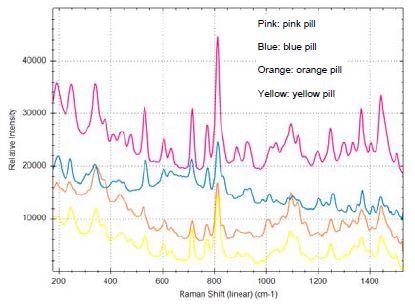
Figure 3. Overlays spectra from four ecstasy pills of different colors measured with the TacticID-1064. Unlike Raman devices with 785-nm laser wavelengths, the TacticID-1064 is able to significantly reduce the fluorescence from the dyes and other additives in the pills, providing distinctive Raman signatures for accurate and reliable identification.
Although MDMA is usually the key component of ecstasy, often tablets are a mixture of several stimulants such as MDA (3,4-methylenedioxyamphetamine), MDEA (3,4- methylenedioxy-N-ethylamphetamine), amphetamine, methamphetamine, caffeine, and other cutting agents.
Using the TacticID-1064’s mixture analysis algorithm, the user can further analyze spectra with HQI values less than 85. For the orange pill stamped with a Tesla logo, the top hit matches to MDE (MDEA) with an HQI of 63.1. This low HQI value indicates the sample composition is likely not dominated by just one component.
The further mixture analysis (Figure 4) on the scan resulted in two components: paper and MDEA HCl. The component “paper” relates to the cellulose-type cutting agents or binding materials inside the pill. The percentage values reported from the mixture analysis indicate the probability of each individual component spectrum in forming the composite spectrum of the sample.
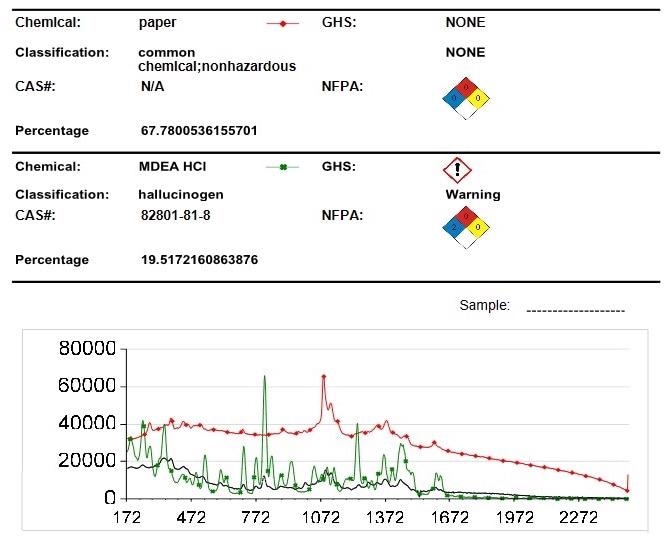
Figure 4. TacticID-1064 mixture analysis result for orange pill with Tesla logo
A pink-pigmented ecstasy pill referred to as “Bull99” and marked with the Red Bull logo circulated the streets and was found to match the reference signature of the stimulant methylenedioxypyrovalerone (MDPV). The Raman spectrum for this drug and it’s correlation to MDPV can be seen in figure 5, having an HQI value of 86.
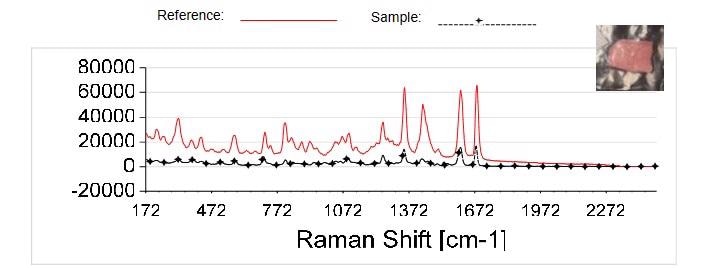
Figure 5. TacticID-1064 test for “Bull99” pill matching to MDPV
Conclusions
The use of 1064 nm laser excitation in Raman technology makes a substantial reduction in the fluorescence seen from pigmented substances when using a laser with a 785 nm wavelength. The use of this revolutionary technology can be found in the latest TacticID-1064 portable Raman device by B&W Tek.
This device can produce characteristic Raman signatures of synthetic components, such as MDMA, that make up pigmented ecstasy tablets. The TacticID-1064 has been shown to correctly identify MDMA in tablets that were pigmented with red, pink, yellow, orange and blue colors using the HQI values to guide users on how similar the unknown sample matches to reference known compounds in the library.
In addition to having the capabilities to analyze tablets that are not made up of a majority pure component using mixture analysis. In conclusion, the advent of the TacticID-1064, as well as other Raman devices with 1064 nm laser excitation broadens the scope of substances that can be safely identified in the field by police and hazardous materials technicians etc.

This information has been sourced, reviewed and adapted from materials provided by B&W Tek.
For more information on this source, please visit B&W Tek.